Immature shoots are required for in vitro culture and long-term cryopreservation of this recalcitrant species. […]
Endemic species
A striking example of Carters flax
Linum carteri var. carteri is an annual plant endemic to Miami-Dade County. Like other annual plants, it has the potential to produce hundreds of seeds that help ensure its next generation. […]
Restoration and Fire in Ephemeral Wetlands
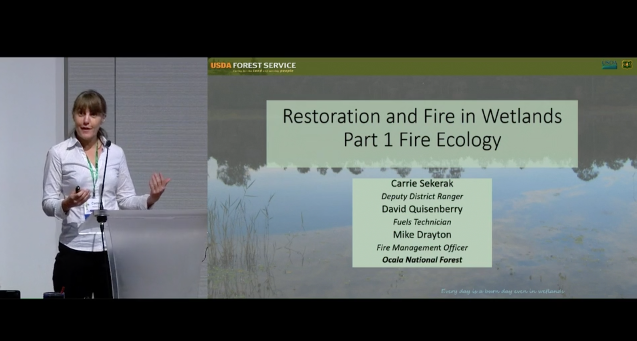
Carrie Sekerak, Deputy District Ranger, Ocala National Forest Carrie Sekerak presents on the state of the isolated wetlands of Ocala National Forest. She describes the current issues faced in isolated wetland management, and gives a snapshot of best practices being applied. […]
Working with Private Landowners to Conserve Critically Endangered Plant Species
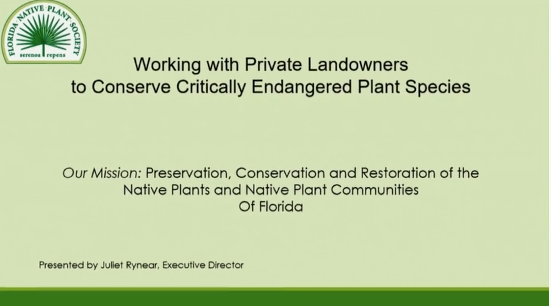
Juliet Rynear, Florida Native Plant Society Executive Director The Florida Native Plant Society (FNPS) is working with private landowners to help conserve critically endangered plant species. Two of our projects represent the importance and value of this work: the Warea Partnership Project and the TorreyaKeepers Project. Warea amplexifolia (clasping warea) is a federally-listed endangered plant […]
Partnerships and Private Lands: The Key to Longleaf Ecosystem Restoration
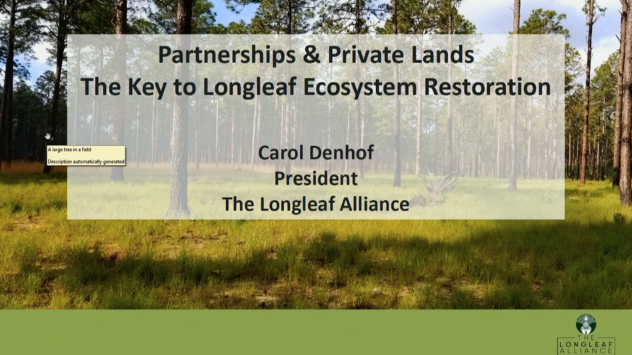
Carol Denhof, Longleaf Alliance The Longleaf Pine was once the dominant tree species in the south, covering over 90 million acres from Virginia to Texas. Over the last 400 years, the abundance of this species has decreased due to non-sustainable timber harvest, clearing of land for agriculture and development and exclusion of fire. As this […]
Regional and National Conservation Initiatives
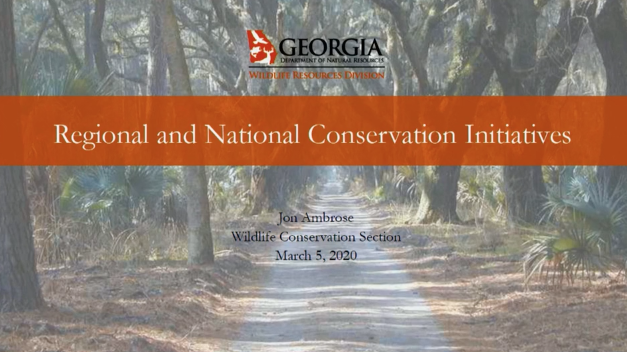
Dr. Jon Ambrose, Georgia DNR, Chief of Wildlife Conservation All state wildlife agencies in the Southeast have developed State Wildlife Action Plans, strategic plans for conservation of rare or declining species and their habitats. Some states have included plants as species of greatest conservation need, and others are considering doing so in the next revision […]
Historic Vegetation and Harper’s Beauty in the Apalachicola National Forest
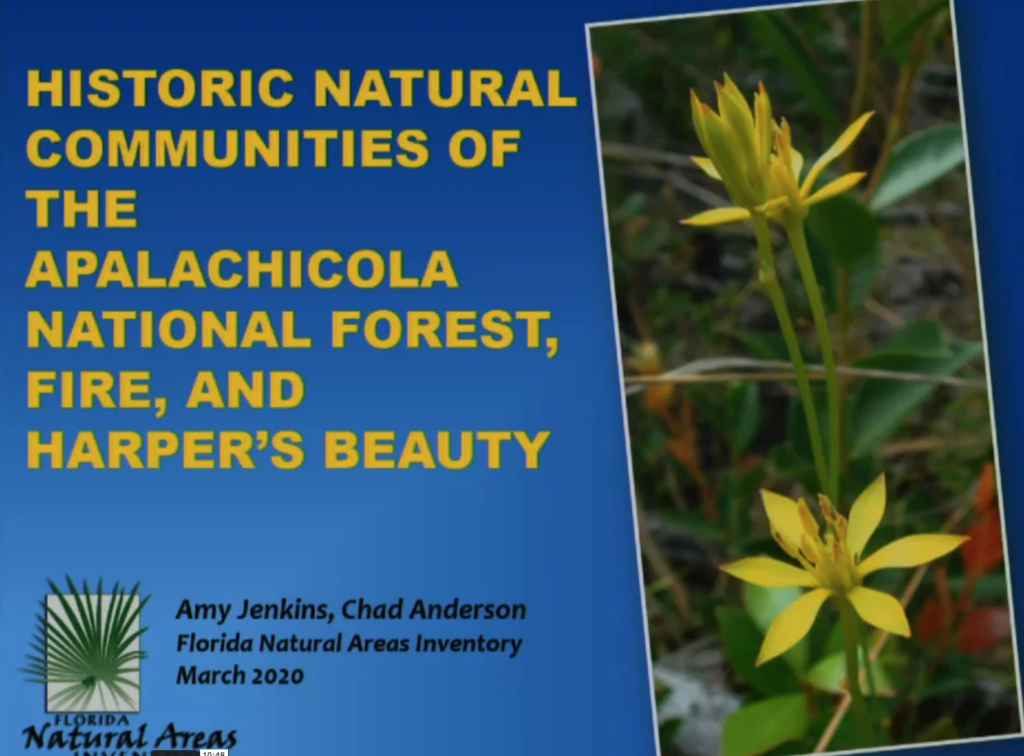
Amy Jenkins, Florida Natural Areas Inventory Chad Anderson, Florida Natural Areas Inventory Jason Drake, United States Forest Service Understanding the historic conditions and habitats in a region is a vital first step to planning restoration and management activities. With our partners, US Forest Service, Florida Forest Service, and the Florida Fish and Wildlife Conservation Commission, […]
Habitat Suitability Models as a Conservation Tool for a Rare Mint, Macbridea alba
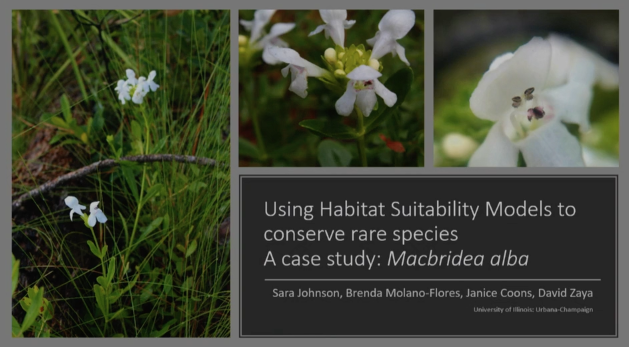
Sara Johnson, Department of Natural Resources and Environmental Science at University of Illinois: UrbanaChampaign Brenda Molano-Flores, Illinois Natural History Survey, University of Illinois: Urbana-Champaign Janice Coons, Eastern Illinois University Many rare and at-risk species exhibit a paucity of research, leaving gaps in the knowledge required to conserve them. Macbridea alba Chapman (White birds-in-a-nest, Lamiaceae) is […]
Safeguarding to Recovery: Georgia Rockcress Case Study
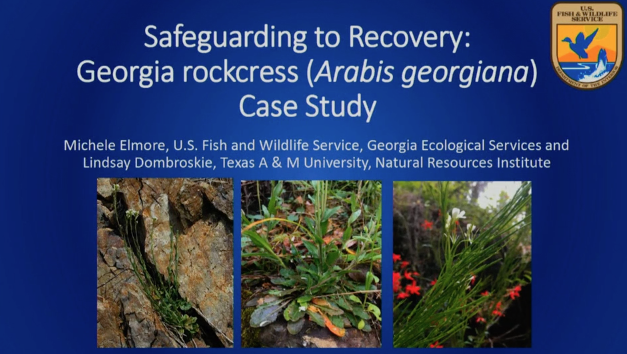
Dr. Michele Elmore, US Fish & Wildlife Service Lindsay Dombroskie, Texas A & M University, Natural Resources Institute Georgia rockcress (Arabis georgiana Harper) is a short-lived perennial plant of the mustard family (Brassicaceae) endemic to Alabama and Georgia. In 2014, this species was listed by the U.S. Fish and Wildlife Service (Service) as “Threatened” under […]
Evaluating Translocation Successes and Challenges: Case Studies of Federally Listed Plant Species of the Lake Wales Ridge, Florida
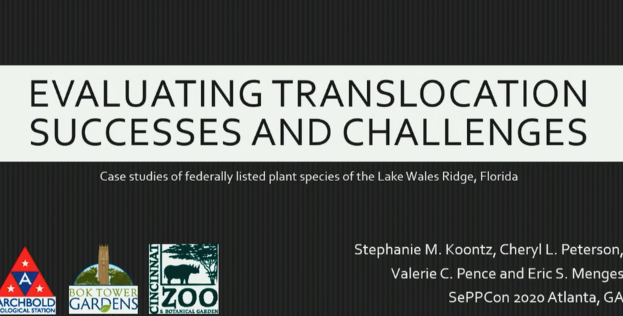
Stephanie Koontz, Archibold Biological Station, Cheryl L. Peterson, Bok Tower Gardens, Valerie C. Pence, Cincinnati Zoo and Botanical Garden, Eric S. Menges, Archbold Biological Station Translocations are an increasingly utilized tool for rare plant conservation. Urbanization along the Lake Wales Ridge, in southcentral Florida, has led to 85% loss of native Florida scrub and sandhill. […]
Assessment of Science Needs for Rare Plants of Conservation Concern in Southeastern Grasslands
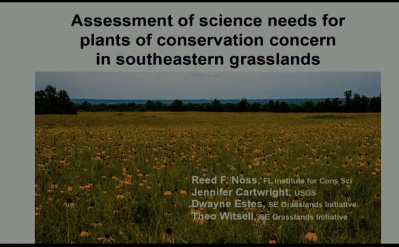
Dr. Reed Noss, Southeastern Grasslands Initiative, Florida Institute for Conservation Science and Southeastern Grasslands Initiative (Contractor) Jennifer Cartwright, U.S. Geological Survey Dwayne Estes, Southeastern Grasslands Initiative Theo Witsell, Southeastern Grasslands Initiative Grasslands of the southeastern United States are considered “endangered ecosystems,” with many grassland types having been reduced by more than 90% since European settlement […]